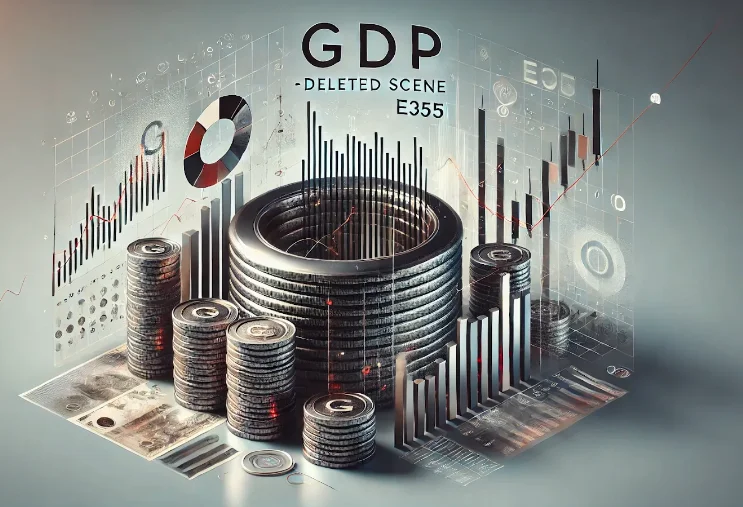Gross Domestic Product (GDP) is a key indicator that measures the economic performance of a country. It represents the total value of all goods and services produced within a nation’s borders over a specific period. Economists and policymakers rely on GDP to gauge economic health, comparing it year over year to understand growth patterns, trends, and overall economic stability. In the context of the keyword “GDP E355,” there is a need to clarify its meaning, as it appears to relate to either a specific measure, model, or economic component in specialized industries.
What Is GDP E355?
While the acronym GDP is widely recognized in economics, the term “GDP E355” seems to blend economic terminology with a more technical or industry-specific designation. From initial analysis, it is possible that “E355” could be a code referring to a classification, model, or even a reference to a specific sector within GDP analysis, such as a focus on energy, technology, or infrastructure. To explore GDP E355 in a meaningful way, let’s consider a scenario where this term might refer to a technical model or economic forecast tool within the study of GDP.
Potential Context of E355 in Economic Models
E355 could relate to an economic model used by industries to measure specific GDP contributions from sectors like engineering, energy, or manufacturing. For example, models tracking how technological advancements contribute to GDP growth might use numerical codes to define subcategories. In this sense, GDP E355 may indicate a specialized economic metric that assesses the performance of specific industries or regions about overall GDP.
For instance, an economic model like E355 might be used to monitor the energy sector’s output, gauging how advancements in renewable energy, like solar or wind power, impact national GDP. Countries striving for sustainability would be keen to track these changes in economic performance, as energy consumption and production play a pivotal role in national growth.
Sector-Specific Contributions to GDP: A Closer Look
When breaking down GDP, economists often focus on various sectors like agriculture, industry, services, and technology. If GDP E355 is a metric tied to a specific sector, it could represent how changes in production output, innovation, or policy shifts influence economic outcomes.
1. Manufacturing and Technology
The manufacturing industry has always been a crucial component of GDP. Advancements in automation, robotics, and artificial intelligence (AI) have revolutionized production processes. A metric like E355 could potentially be linked to these innovations, capturing how increased efficiency and reduced labor costs impact overall GDP.
2. Energy Sector Contributions
In the energy sector, particularly as countries transition to green energy, there is a need for new models and metrics to track how renewable energy adoption influences national economic output. The E355 designation could refer to economic indicators used to track the GDP contribution from wind, solar, and other renewable energy sources.
3. Services Industry
With the shift toward a more service-oriented global economy, measuring how services contribute to GDP is essential. E355 might be a specialized code for measuring output in this rapidly growing sector, accounting for technology services, financial markets, and digital infrastructure.
Economic Forecasting and the Role of Models Like GDP E355
Forecasting economic growth and analyzing GDP trends require sophisticated models. E355 could be a part of such a forecasting system, used by economists to project future economic conditions based on current data. Economic forecasting tools often rely on complex algorithms and data points to predict how industries will perform and how this will affect national economic growth.
For example, if a country is making a significant investment in technology infrastructure or renewable energy, economists might use a specialized model to predict how these investments will impact GDP over time. A metric like GDP E355 could help economists assess the effects of policy decisions, market changes, or global economic shifts on GDP growth rates.
International Comparison and GDP Models
Global comparisons of GDP are critical for understanding economic performance on an international level. The E355 model, if applicable to international comparisons, would likely be used to evaluate how specific sectors within a country compare to global trends. For example, the manufacturing output of a country using advanced robotics technology might be compared to countries still using traditional manufacturing methods.
Similarly, countries investing heavily in renewable energy would need models like E355 to determine how their green energy initiatives stack up against other nations’ GDP contributions. International organizations like the World Bank and the International Monetary Fund (IMF) often use similar economic models to assess global economic health, making comparisons between countries’ GDP and sector-specific outputs.
The Importance of Accurate GDP Measurement
Accurately measuring GDP is crucial for governments and businesses alike. Governments use GDP data to make decisions about taxation, infrastructure investment, and social services. Businesses rely on GDP figures to understand market potential, consumer spending trends, and overall economic conditions. Therefore, models like E355, which may focus on specific aspects of the economy, play a critical role in ensuring accurate data collection and interpretation.
The more detailed and sector-specific GDP metrics become, the more precisely policymakers can tailor their economic strategies to foster growth. For instance, if GDP E355 represents energy production metrics, governments could use this data to assess the viability of investing further in green technology or energy-efficient infrastructure.
Conclusion: Decoding GDP E355
While the exact meaning of GDP E355 remains speculative without further clarification, it is evident that it could represent a sophisticated economic tool or model used to measure GDP contributions from specific sectors, such as energy or technology. In a rapidly evolving global economy, the need for detailed economic analysis and sector-specific metrics is more critical than ever. Whether applied to renewable energy, manufacturing innovations, or the services sector, models like E355 allow for a nuanced understanding of how individual industries contribute to overall economic growth.
Governments, businesses, and economic analysts must continue to refine their tools for measuring GDP, ensuring that new economic realities—like the rise of green energy and technological innovation—are accurately reflected in national economic data.
